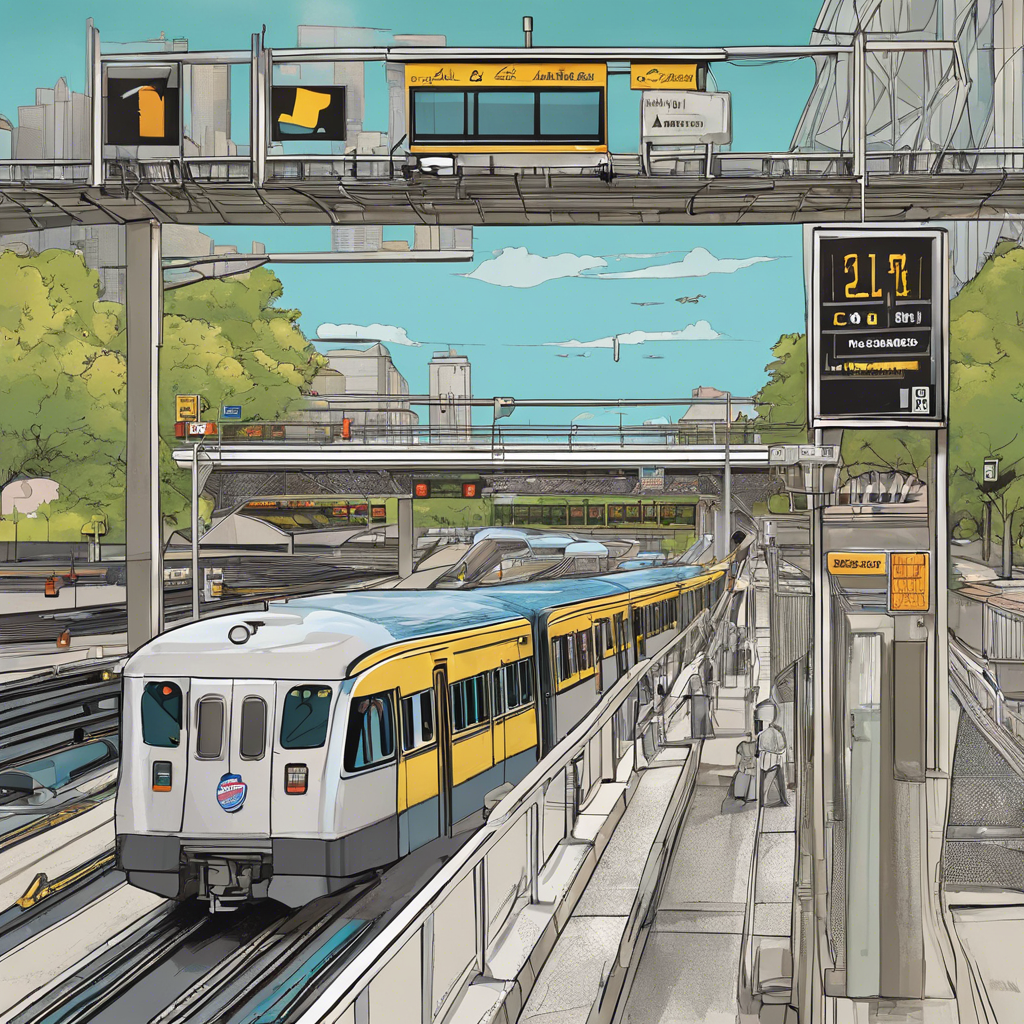
What Are The Public Transportation Options Available At JFK Airport?
Introduction
JFK Airport, situated in Queens, New York, serves as a prominent international gateway and hub for global travelers. This airport offers various public transportation methods giving passengers easy access to popular destinations in New York City and the surrounding metropolitan area.
Public Transportation Options at JFK Airport
Travelers using JFK Airport can select from multiple public transportation options designed for convenience and efficiency. Whether prioritizing speed, cost, or direct routes, these services cater to all preferences for navigating New York City.
- AirTrain JFK seamlessly connects to the NYC subway and Long Island Rail Road (LIRR).
- MTA buses cover numerous routes, linking you to subway stations and local neighborhoods.
- Taxis and rideshare services are easily accessible outside each terminal, providing direct transportation.
AirTrain JFK Overview
The AirTrain JFK is an essential part of the airport's transportation infrastructure. Operating around the clock, it connects the airport to vital transit hubs for easy transfers to the New York City subway system or Long Island Rail Road, making it a top choice for swift travel around the city or out to Long Island.
- Cost: $8.00 for AirTrain access, plus additional subway or train fare.
- Travel Time: Roughly 60 minutes to Manhattan when combining with subways during peak hours.
- Routes: Connects to Jamaica Station (LIRR and subway) and Howard Beach Station (A subway line).
Exploring MTA Bus Routes
The Metropolitan Transportation Authority (MTA) operates an array of bus routes serving JFK Airport. These buses represent an economical choice for travelers and link to various neighborhoods and subway stations across New York City.
- Bus routes include the Q3, Q6, Q7, Q10, and B15, each connecting to multiple areas including Brooklyn and Queens.
- Cost: Standard fare of $2.75, payable by MetroCard.
- Travel Time: Varies based on traffic and route specifics, averaging 30 to 70 minutes.
Taxis and Rideshare Services at JFK
For those preferring a quicker and more comfortable option, taxis and rideshare services like Uber and Lyft are readily available at JFK Airport. Conveniently located outside terminals, these services ensure direct access to any destination in the city.
- Flat fare of $70 to Manhattan, with additional charges for tolls and tips.
- Travel Time: Approximately 30 to 60 minutes, though travel may exceed an hour during peak congestion.
- Rideshares can be booked in advance through their respective apps.
Conclusion
Whether opting for the rapid AirTrain, budget-friendly MTA buses, or the ease of taxis, JFK Airport provides a variety of public transportation options tailored to meet diverse travel needs. Each mode ensures access to key destinations across New York City, simplifying your journey from the airport.
Expert Quote
Dr. Andrew S. Gross, Transportation Systems Expert and Author
Public transportation choices such as the AirTrain and MTA buses greatly enhance accessibility at major airports, addressing varied traveler needs and facilitating urban mobility improvements.
Air Transportation Journal, 2022
Relevant Links
Public Transportation - JFK - John F. Kennedy International Airport
https://www.jfkairport.com/to-from-airport/public-transportationHow to get to JFK Airport on public transit
https://new.mta.info/guides/airports/jfkTaxi, Car, and Van Service - JFK Airport
https://www.jfkairport.com/to-from-airport/taxi-car-and-van-serviceHow to get to Manhattan from JFK Airport
https://new.mta.info/guides/airports/jfk/jfk-airport-to-nycHow to Get from JFK Airport to Manhattan - BLADE
https://www.blade.com/jfk-to-manhattanYouTube Videos
Most popular questions

How Do The Personal Relationships Among Gods Affect Their Decisions In The Iliad?
The intricate relationships among the gods in Homer's epic poem 'The Iliad' play a crucial role in shaping their actions and decisions. These divine interactions create a complex web of fates, where each god's personal alliances and rivalries directly influence the events of the mortal world.

What Strategies Can Parents Use To Educate Their Children About Online Safety Beyond Privacy Settings?
In today's digital landscape, teaching children about online safety is essential for their protection and well-being. While privacy settings play a critical role, parents can implement various strategies to create a thorough understanding of online safety principles among their children.

What Are The Different Types Of Insulation Materials Commonly Used In Buildings, And How Do They Compare In Terms Of Thermal Resistance?
Insulation materials are vital for enhancing energy efficiency in residential and commercial buildings by minimizing heat transfer. Understanding the various insulation types can lead to better choices for thermal resistance and overall comfort.
Most recent questions

How Can The Authenticity Of An Influencer's Brand Align With A Film's Thematic Elements?
The convergence of influencer marketing and filmmaking presents a fascinating landscape, particularly when evaluating how the authenticity of an influencer's branding can complement a film's thematic elements. This synergy enhances storytelling and boosts audience engagement, making this a vital topic for exploration.

What Are Some Vegetarian Side Dishes That Complement Grilled Meats And Wine?
Pairing flavorful vegetarian side dishes with grilled meats and fine wine heightens the overall dining experience while creating a balanced and delicious meal. Whether you're hosting a summer barbecue or enjoying a cozy dinner at home, these vegetarian side options can significantly enhance your menu.

How Does The Integration Of Multimedia In Digital Narratives Enhance Audience Engagement Compared To Traditional Storytelling Methods?
The integration of multimedia in digital storytelling significantly transforms how narratives are conveyed and experienced. Unlike traditional storytelling, which typically relies on text or spoken word, multimedia storytelling fuses various formats such as images, audio, video, and interactive elements, resulting in a richer and more engaging experience for the audience.